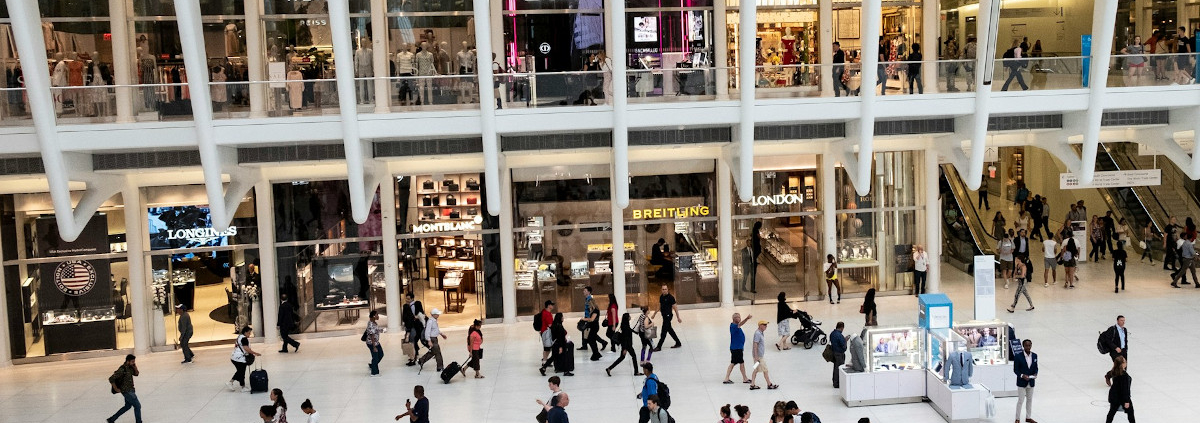Why Cashierless Stores Still Haven’t Taken Over: The Industry’s Reality Check
Amazon’s closure of eight Go stores in March 2023 should have been a wake-up call for the entire retail industry. Here was the company that pioneered cashierless shopping, the tech giant with virtually unlimited resources, pulling back from physical autonomous retail. Those eight locations in New York, San Francisco, and Seattle weren’t just store closures—they were admissions that the economics weren’t working.
The retreat hasn’t stopped. Amazon closed another Go store in Woodland Hills, California this February, and industry insiders know more closures are likely coming. Instead of doubling down on physical stores, Amazon has shifted to licensing their “Just Walk Out” technology to other operators. That’s a telling strategic pivot—keep the tech, ditch the headaches of actually running stores.
Amazon wasn’t alone in facing harsh realities. Grabango, which raised somewhere between $73-93 million, shut down last October after failing to secure more funding. For those keeping score, that’s one of Amazon’s biggest competitors in the autonomous checkout space simply running out of money and closing shop.
The Numbers Game That Doesn’t Add Up
Let’s be honest about what Amazon’s store closures really tell us. The company didn’t abandon Go stores because the technology failed—their “Just Walk Out” system works. They closed them because running cashierless retail locations as a business turned out to be much harder than anyone anticipated.
Think about it: Amazon has the deep pockets to absorb losses while perfecting a concept. If they can’t make the unit economics work, what does that say for everyone else? The licensing strategy they’ve adopted speaks volumes. They’re essentially saying, “Here’s the technology, you figure out how to make money with it.”
This shift puts traditional retailers in an interesting position. The technology exists and it works, but the company that developed it couldn’t turn it into a profitable retail operation. That’s not exactly a ringing endorsement for widespread adoption.
Where the Technology Still Struggles
Anyone who’s spent time analyzing cashierless deployments knows the devil is in the details. The technology has gotten significantly better since Amazon’s first Go store opened in 2018, but real-world retail presents challenges that controlled test environments don’t capture.
Walk into any grocery store and you’ll see the complexity. Customers pick up items and put them back. They hand products to their kids, who then hand them to someone else. People shop in groups, splitting up and reconvening. Fresh produce gets squeezed, examined, and sometimes rejected. These are normal shopping behaviors that create headaches for computer vision systems designed to track every interaction.
The produce challenge remains particularly stubborn. Bananas look different from week to week. Apples come in varieties that even humans sometimes confuse. Customers handle multiple pieces before choosing what to buy. Creating AI systems that can reliably track these interactions without constant human intervention? That’s still more complicated than most people realize.
What Customers Actually Want
Here’s something the industry learned the hard way: customers don’t necessarily want to eliminate all human interaction from shopping. Sure, nobody likes waiting in long checkout lines, but that’s different from wanting to shop in a completely automated environment.
Shopping serves social functions that technology companies sometimes miss. People ask employees where to find items, get recommendations, need help with returns. The brief interaction with a cashier might be the only human conversation someone has all day. Eliminating these touchpoints entirely can make stores feel sterile and unwelcoming.
Privacy concerns are real too, though they manifest differently than you might expect. Most people are fine with being tracked online, but physical surveillance feels different. Walking through a store where you know cameras are analyzing your every movement creates a psychological effect that some customers find uncomfortable, regardless of their general comfort with technology.
The Hybrid Approach That’s Actually Working
Instead of going full autonomous, many retailers have found success with what we might call “selective automation.” Self-checkout has evolved dramatically—modern systems handle most transactions smoothly while still providing human backup when things go wrong.
Mobile scan-and-go apps have gained traction, particularly with frequent shoppers who appreciate skipping lines. These solutions give tech-savvy customers the convenience they want while preserving traditional checkout for everyone else. It’s a both/and approach rather than either/or.
Smart shopping carts represent another middle ground that’s showing promise. Customers get the autonomous checkout experience while maintaining familiar shopping patterns. The technology is less intrusive, the implementation costs are lower, and retailers don’t have to completely redesign their operations.
The Vendor Reality Check
Grabango’s failure wasn’t just about one company—it reflected broader challenges facing pure-play autonomous retail vendors. Building this technology requires enormous capital investment, but the customer base has proven smaller and more cautious than anticipated.
Standard Cognition managed to raise $150 million and hit a $1 billion valuation, showing that some vendors are still finding investor interest. However, even successful companies in this space seem to be focusing on specific niches rather than trying to revolutionize all of retail.
Amazon’s licensing model might actually be the smartest approach. Let someone else deal with hiring staff, managing inventory, handling customer complaints, and all the other operational complexities of retail. Just provide the technology and collect licensing fees. That’s a much cleaner business model than trying to be both a tech company and a retailer.
Where Autonomous Actually Makes Sense
The technology hasn’t failed—it’s just found its natural habitat. Airport locations, corporate cafeterias, university bookstores, hotel markets—these controlled environments where autonomous retail actually thrives.
These locations share certain characteristics: limited product selection, repeat customers who learn the system, controlled access, and customer demographics that skew tech-comfortable. They also often operate with different economic models where convenience commands premium pricing.
Traditional retailers operating in competitive consumer markets face a different set of constraints. Price sensitivity is higher, product variety is greater, customer demographics are more diverse, and operational complexity increases dramatically.
The Strategic Reality for Retailers
For retail executives weighing autonomous technology investments, the current landscape suggests a more nuanced approach than the all-or-nothing deployments that grabbed headlines a few years ago.
The most successful implementations seem to target specific operational pain points rather than attempting comprehensive store transformation. Maybe that’s automated inventory management, enhanced self-checkout, or mobile payment integration. The key is identifying where automation provides clear, measurable benefits without disrupting elements of the shopping experience that customers value.
Omnichannel strategies that include autonomous options alongside traditional services are proving more sustainable than pure autonomous approaches. This lets retailers serve different customer preferences while capturing efficiency gains where they make sense.
What the Data Actually Shows Us
The real value of autonomous retail technology might not be in eliminating cashiers—it could be in the data and insights these systems generate. Understanding how customers move through stores, which products they interact with, how long they spend in different sections—this information has strategic value beyond the immediate transaction.
Even if the autonomous checkout component doesn’t justify implementation costs on its own, these insights could inform broader retail strategies, improve store layouts, optimize product placement, and enhance overall customer experiences.
Navigating the Regulatory Landscape
Privacy regulations continue evolving, creating additional complexity for retailers considering autonomous systems. Data handling requirements vary significantly across markets, and compliance costs add to the overall implementation expense.
Some jurisdictions are also grappling with accessibility concerns. Should stores be required to accept cash payments? What about customers who struggle with digital interfaces? These policy discussions could influence how autonomous retail develops in different markets.
Employment impact remains politically sensitive, even though retail automation has been ongoing for decades. The visible nature of eliminating cashier positions in autonomous stores draws more attention than gradual automation in warehouses or back-office operations.
The Path Forward
Autonomous retail will likely continue evolving, but probably not in the revolutionary way many predicted. Instead of replacing traditional retail formats, the technology is finding its place in specific applications where the benefits clearly outweigh the costs and complexity.
The licensing model that Amazon adopted could become the standard approach—separating technology development from retail operations lets companies focus on what they do best. Technology providers can innovate without the operational headaches of running stores, while retailers can adopt proven solutions without developing proprietary systems.
Industry consolidation seems inevitable as the market matures. Companies that can demonstrate clear value propositions for specific use cases will thrive, while those chasing the broad autonomous retail vision may struggle.
The cashierless retail revolution that many predicted simply didn’t happen as a wholesale transformation. Instead, we’re seeing autonomous technologies become specialized tools that provide value in particular circumstances. That might actually be a more sustainable outcome than the universal automation that early advocates envisioned.
For retail professionals making technology decisions today, success lies in matching capabilities with specific needs rather than pursuing automation because it seems innovative. The future of retail will likely include autonomous elements, but as part of broader strategies rather than replacements for human-centered experiences. Sometimes evolution works better than revolution.







